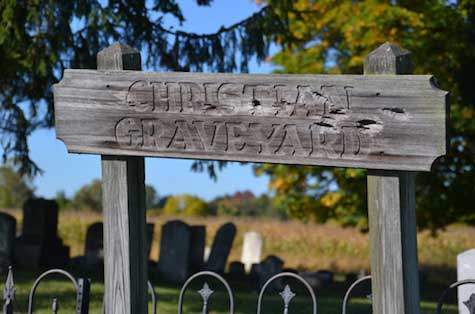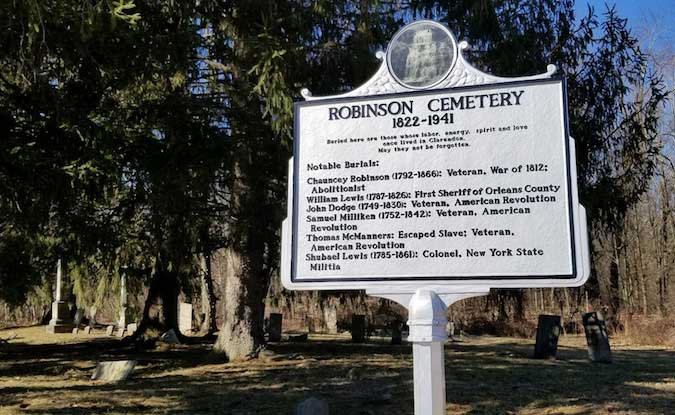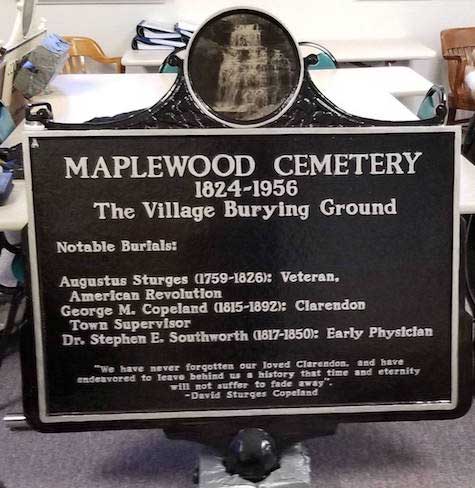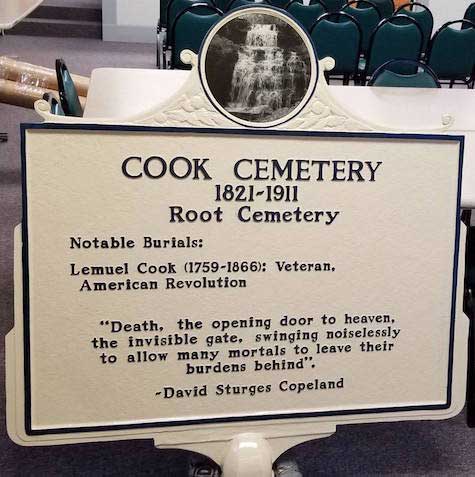New signs going up for historic Clarendon cemeteries
Photos courtesy of Melissa Ierlan
CLARENDON — The first of four new signs for Clarendon pioneer cemeteries was installed this morning by Melissa Ierlan and her husband, Fred Seeman. Ierlan, the town historian and code enforcement officer, secured funding for the signs through the Elizabeth Dye Curtis Foundation in Orleans County. The cast-aluminum signs are made by Sewah Studios in Ohio.
The signs are replacing wooden ones that have become rotted and difficult to read.
Robinson Cemetery is on Route 237 at the intersection of Glidden Road.
The signs include an image of the Clarendon water falls, and they include quotes from David Sturges Copeland, who wrote the History of Clarendon in 1889. “Buried here are those whose labor, energy, spirit and love once lived in Clarendon,” the Robinson sign states. “May they not be forgotten.”
Each of the signs highlight some Clarendon residents buried in the cemeteries. The Robinson Cemetery includes Chauncey Robinson, a veteran of the War of 1812 who was a prominent abolitionist in the community.
Here are images of the other signs that should be installed soon.
Pettengill Cemetery on Hibbard Road is also known as the Christian Graveyard and Manning Cemetery. Clarendon’s founder, Eldredge Farwell, is buried here.

Photo by Tom Rivers: This photo shows the wooden sign for Pettengill Cemetery, which is also known as “Christian Graveyard.”
Maplewood Cemetery is on Route 237, south of the Clarendon hamlet and north of Hinds Road.
Root Cemetery, also known as Cook Cemetery, is on Munger Road in Clarendon.
Lemuel Cook is buried at this cemetery. He fought in the American Revolution and died on May 20, 1866, at the age of 107. He was the last living pensioner of the American Revolution. Cook saw action at the Battle of Brandywine and Yorktown and met General George Washington.










































































